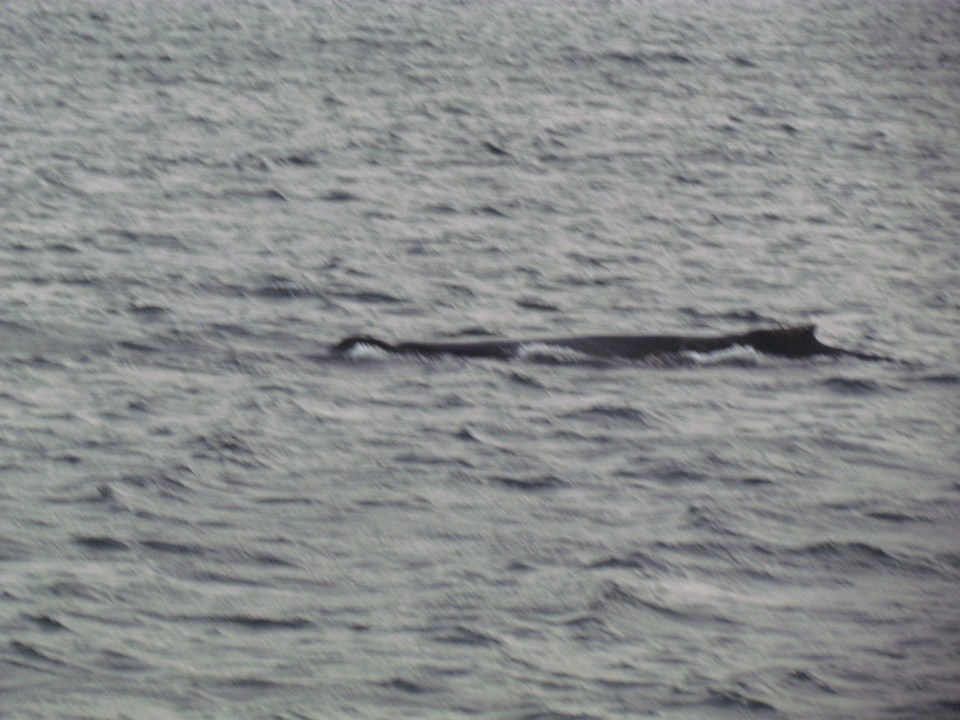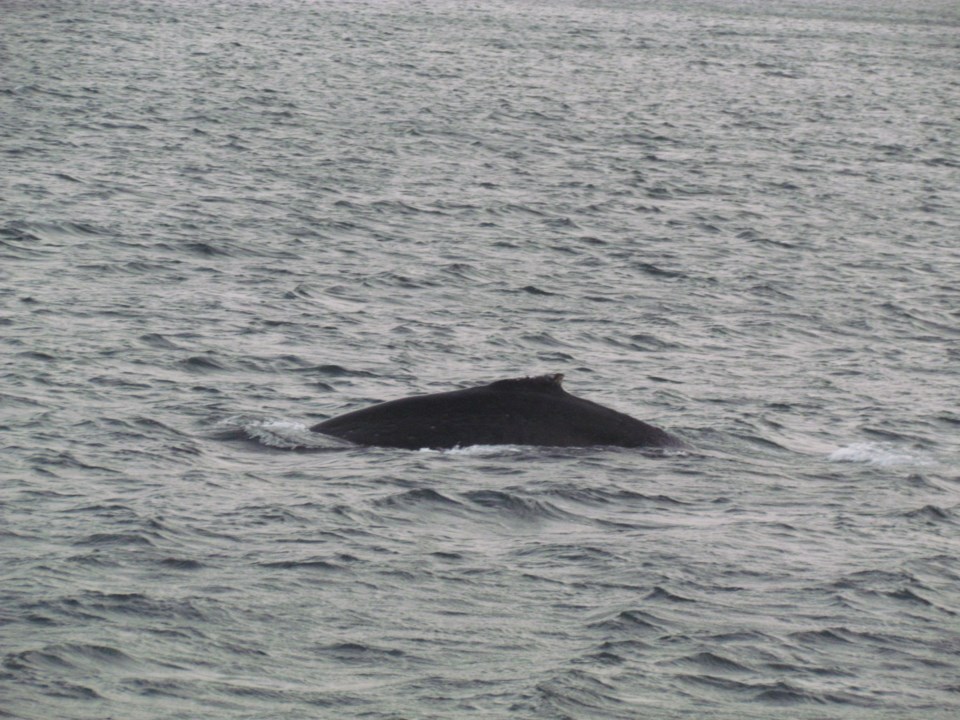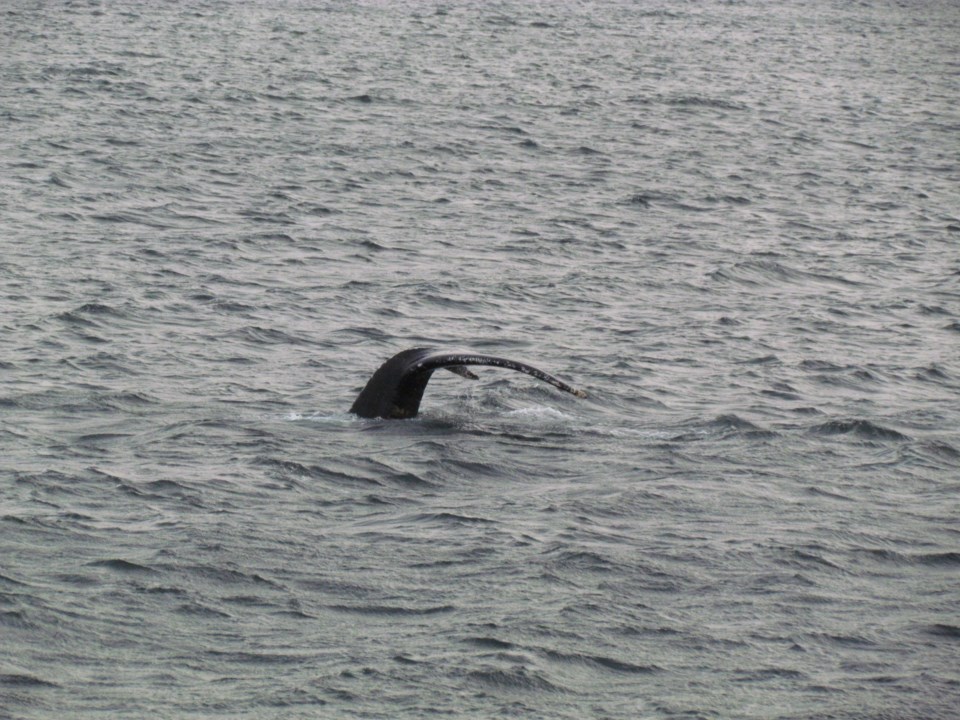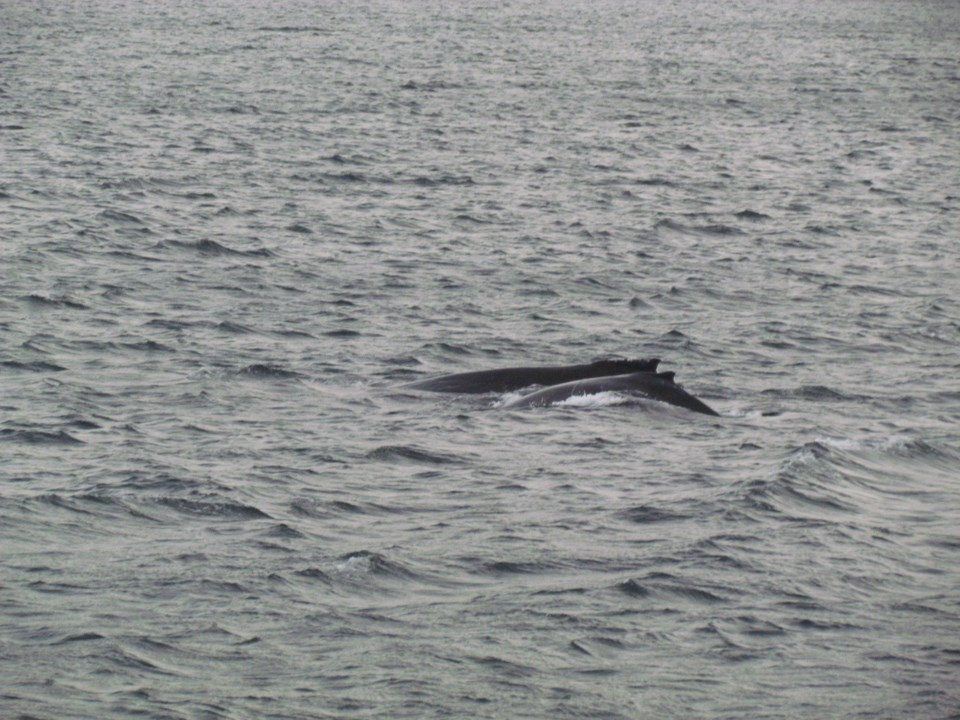This content was originally published by the Longmont Observer and is licensed under a Creative Commons license.
The Pacific Ocean, where humpback whales live and migrate, has almost 54 million square miles of water surface. With an average depth of over 35,000 feet, how could we possibly get in a boat for two hours and be guaranteed to see a whale in all of that? And yet there are companies all over the coast of Alaska that guarantee you will see a whale, or they will give your money back.
We took one of these tours to Point Adolphus, and no refund was necessary. Point Adolphus, in Icy Strait, is one of Alaska's most active feeding grounds for humpback whales. According to our guides, research being done currently is showing that whales are not just hungry, but curious. In fact, they tend to surface even more often when whale watching boats are nearby, even though whale watchers are not allowed to feed the whales.
We used the face of a clock all around us to easily point out a sighting, 12:00 being directly in front of the boat, and 6:00 being directly behind the boat. I imagined that as we were calling out, "Humpback at 2:00!" they were calling "Boat of humans at 8:00!" We would react by grabbing our cameras, and they would react by surfacing just enough to catch a glimpse of these strange creatures who couldn't swim.
Not only had we seen the tell-tale 10-20 foot blows of the whale before we ever left the little bay from which our boat launched, but it didn’t take very long to be carried further out and then surrounded by the curious creatures at Adolphus Point. We would see a fountain of water spray from the ocean surface. Actually, we learned that it wasn't really water.
The whale is actually expelling air from its blowhole, not water. Along with the air, out comes a lot of mucus, and it's all much warmer than the water, so steam results as well. Long story short, the whale blows its nose, and the result is a steaming fountain of air and snot. Too bad there are no whale-sized Kleenex tissues.
Once we saw the blow, we would lift our cameras and focus in so we wouldn't miss what was coming next. (This explains why we have no pictures of the blows themselves.) If we watched long enough, we would see the huge back of the graceful animal as it hovered momentarily at the surface.

It would then curve upward, showing its long, arching back, and we knew it was getting ready to dive again. It was satisfied with its look at the strange creatures in the bobbing vessel and ready to look for more of its favorite food.
A humpback is a baleen whale. This means that opens its mouth and swims forward, trapping thousands of tiny krill and fish in its huge mouth. Then it closes its mouth and expels the water, using its baleen plates to trap the meal inside. Finally, it swallows and starts all over again.
Humpback whales, unlike many other baleen whales, work together to make feeding even more effective. They work as a team in a circle to basically herd the tiny creatures, blowing bubbles underneath them, into a cylinder shape area of water. ll at once, the whales will then swim up through this cylinder and gather the trapped animals into their mouths to be filtered and swallowed. I can see why they work so hard since they need to eat up to 3,000 pounds per day while in the feeding grounds!

The long, lingering arch of the back would lead to what seemed like nothing... until the fluke would finally appear. The underside of this huge sweeping tail has a different design for each whale. We were told that the fluke was like a fingerprint, marking the uniqueness of each individual whale. We saw one that was completely white, but we sadly did not catch it on camera.

When we saw two blows close together, the captain of The Golden Eagle indicated that we were witnessing the playful intimacy of a mother and child pair. Humpbacks, like all whales, give birth to live young. These babies, called calves, weigh up to a ton at birth! This sounds huge, but mama weighs closer to 40 tons!

We finally headed back to shore, and on the way, we saw sea lions and even an otter. We were fully satisfied with our experience, although we wouldn't have complained if we had had a better zoom lens, or if we had been able to see one of these beauties breach right out of the water. Maybe next time.


